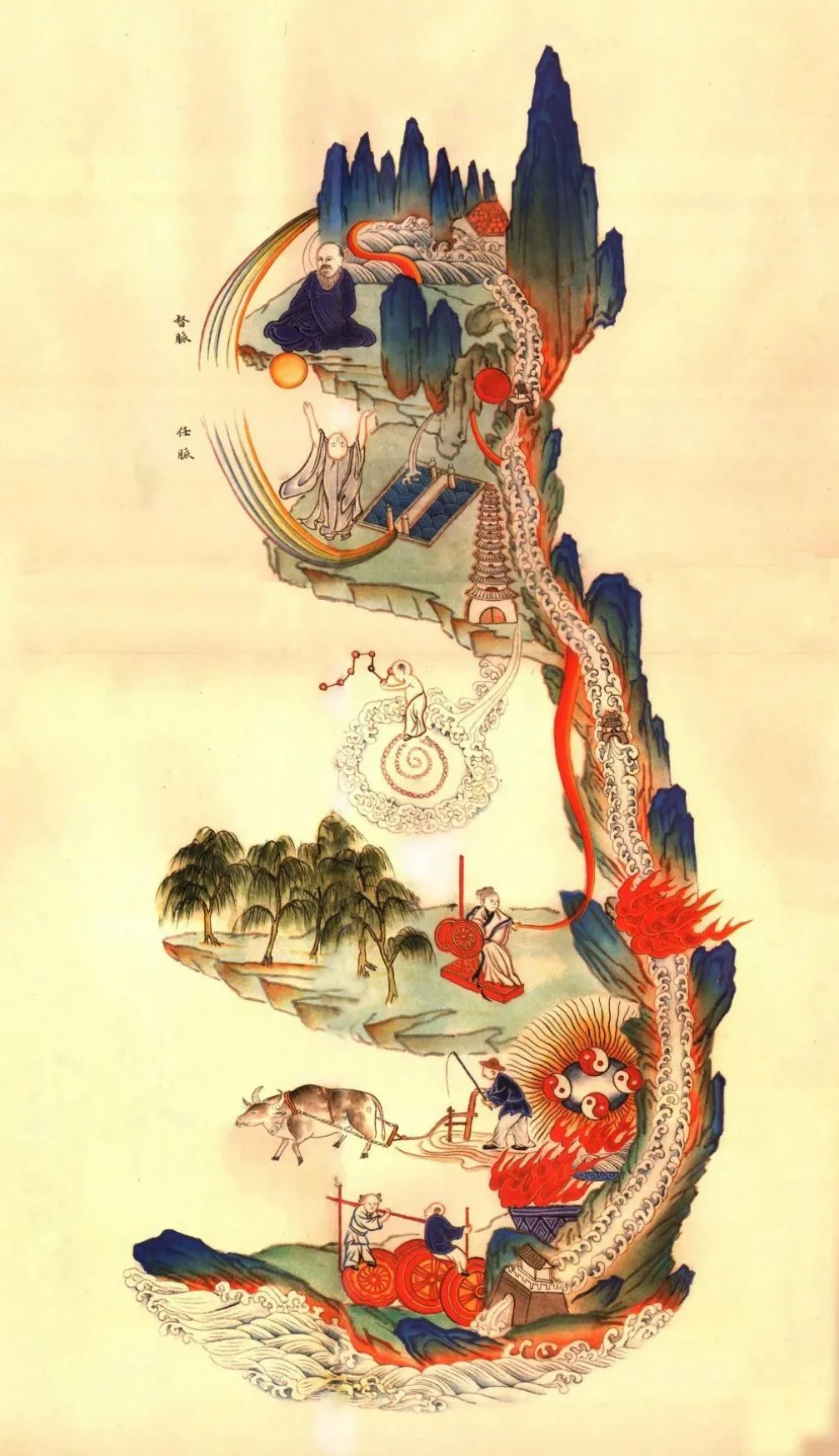I love this image of the ‘inner landscape’, an 1886 Daoist depiction of the human body as a microcosm of the universe.
It is full of imagery and fascinating detail:
At the top of the drawing, brain tissue is represented by the nine craggy peaks of Mount Kunlun (heavenly abode of the immortals and source of the Yellow River).
The spinal cord is a meandering watercourse flowing from the head.
Divine water (qi of Yin) rushes down from the head to be met with fire (qi of Yang) rising up from the abdomen. When this equalisation is achieved, the four Yin-Yang symbols radiate and the elixir can finally be formed.
We can see Laozi meditating in the forebrain
A twelve-storey pagoda (representing the throat)
A flaming spiral of a heart in which a boy strings together coins to form the Big Dipper (thought of as the centre of the cosmos)
A woman spinning her wheel (representing the kidneys)
Intestines in the shape of a buffalo plowing and planting the elixir (or herb) of life. This imagery of plowing, planting, and harvesting relates to the process of cultivating the inner elixir and nurturing spiritual growth.
The white-headed old man (Laozi) and the blue-eyed monk (Bodhidharma) represent the integration of inner and outer, or perhaps different aspects of the self.

